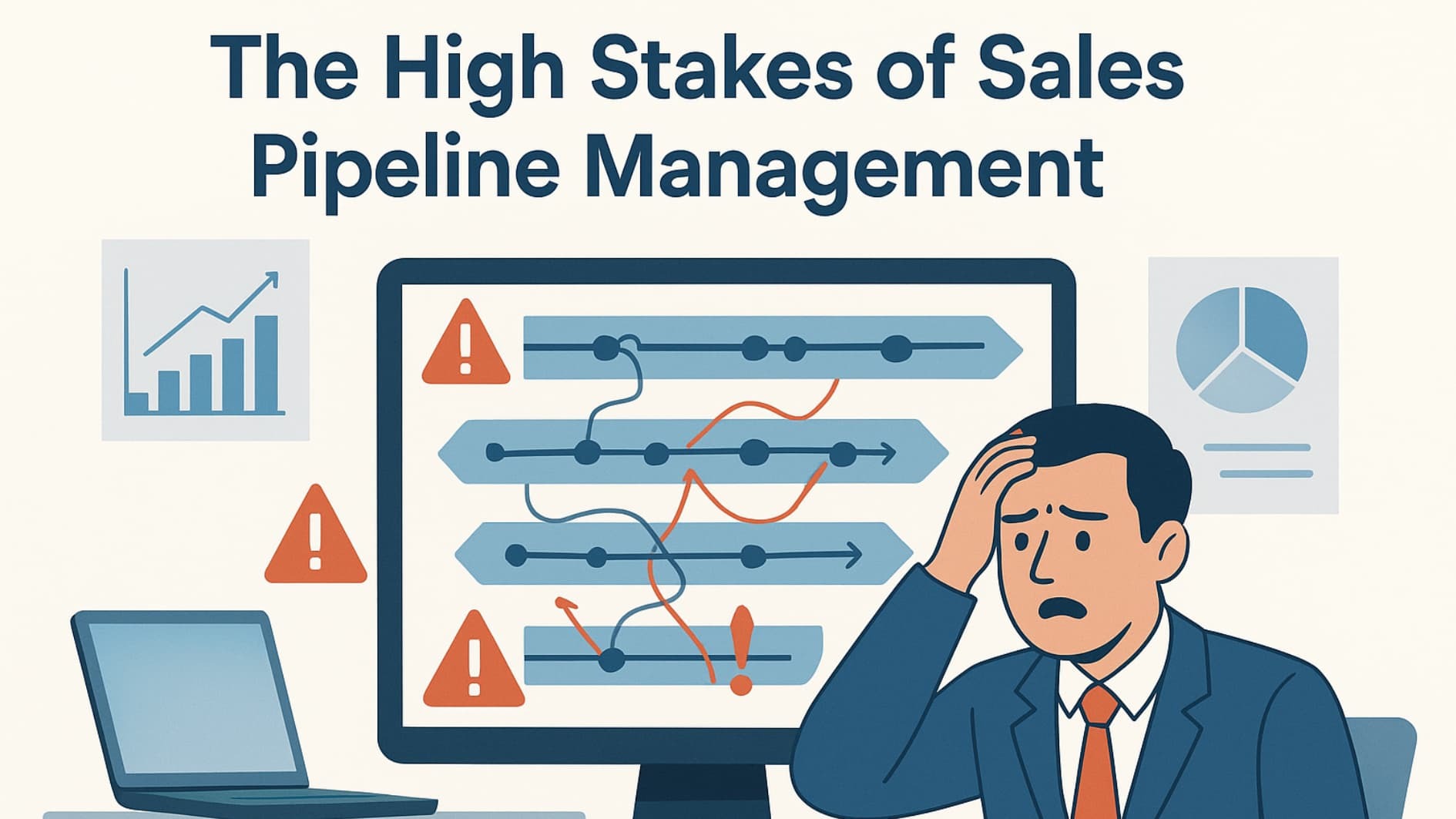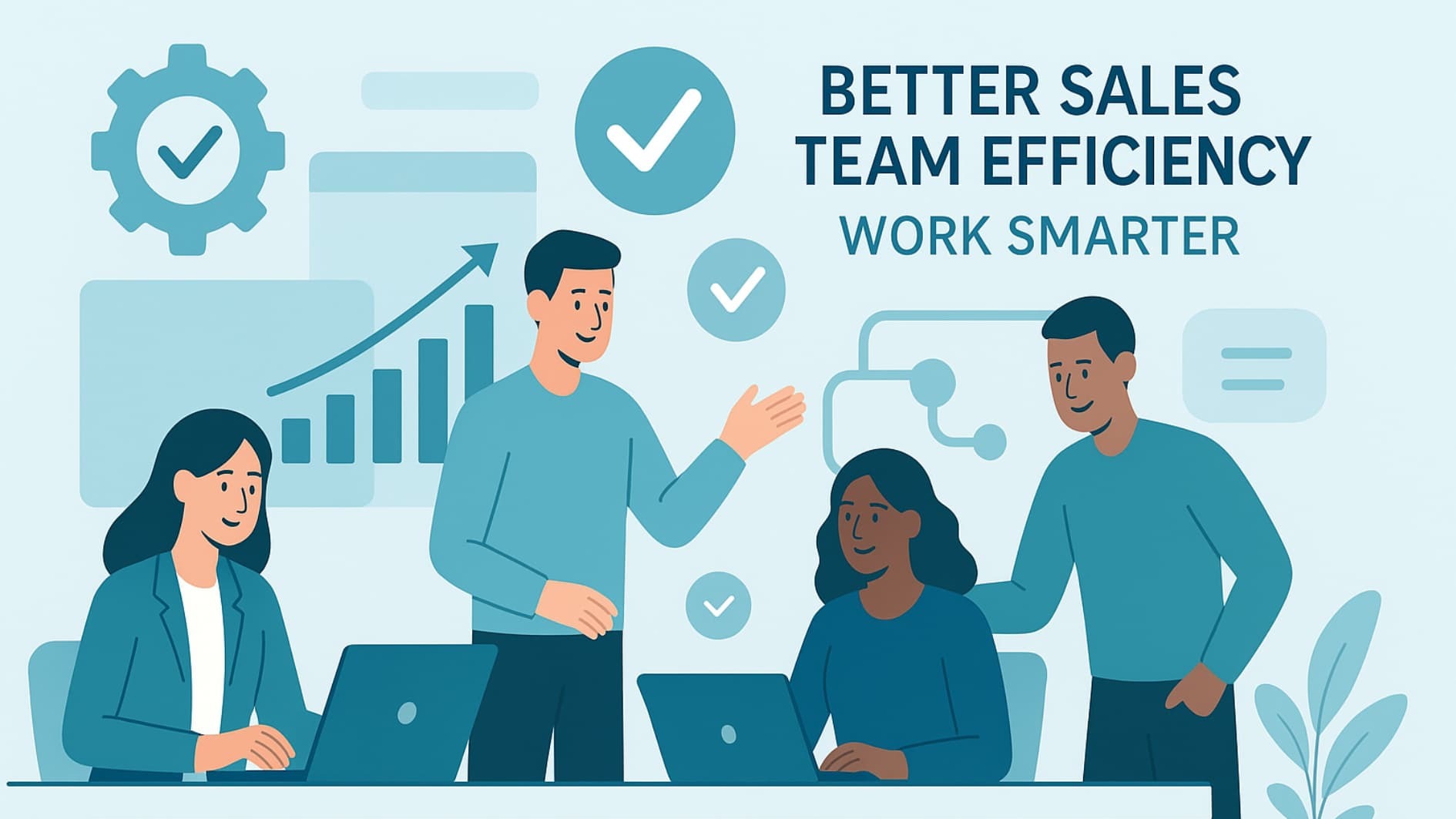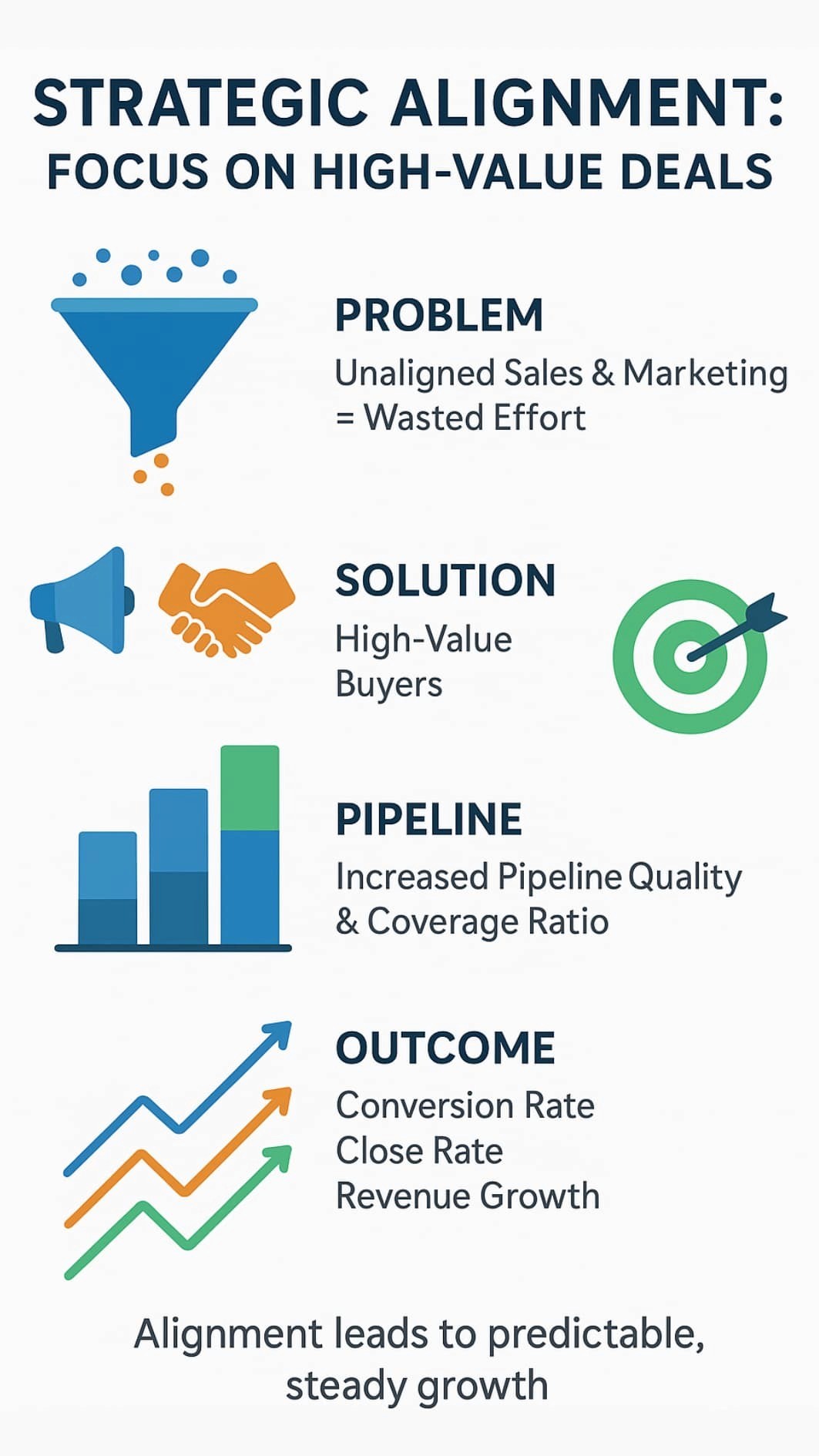Pipeline Generation Tactics
Your sales pipeline is like a roadmap that shows how deals move from start to finish. At Hyperke, we help sales teams close more deals by keeping their pipeline organized and easy to follow. When everything is in order, salespeople know exactly what to do next with each potential customer.
Many companies we work with used to have messy pipelines that made it hard to track their deals. With the right system, sales teams can see which leads need attention.
Keep reading to learn how a better sales pipeline can help your company make more sales.
Key Takeaways
A well-maintained sales pipeline guides sales teams through each step, from first contact to closing deals. Sales reps who actively monitor their pipeline tend to hit their targets more consistently.
Numbers tell the story - tracking how long deals take to close, average deal value, and the percentage of qualified leads that become customers helps predict next quarter's sales. This data lets managers plan smarter quotas.
Quick fixes for common holdups (like using software to handle paperwork) mean deals close faster, putting more money in the bank sooner. The right tech tools cut down busywork so reps spend more time actually selling.
The High Stakes of Sales Pipeline Management

A sales pipeline maps out every potential deal from the first "hello" to the final handshake. It's like a GPS for sales teams, showing exactly where each lead stands in their buying journey. When managed right, it spots trouble before it tanks the quarter's numbers.
Take this real example from the B2B space: A tech firm watched their win rates plummet when sales reps chased too many unqualified leads, highlighting the importance of effective pipeline generation tactics to keep deals moving smoothly.
Their pipeline got clogged with dead-end deals, like trying to fill a bucket with a hole in it. The sales team burned through hours pitching to prospects who weren't ready (or willing) to buy.
Poor pipeline health creates a ripple effect. Sales leaders can't predict next month's closed won deals. Setting realistic targets becomes guesswork. But a well-oiled pipeline keeps qualified leads flowing smoothly through each stage, from initial contact to signing. Sales reps spend time where it counts, boosting close rates and hitting targets more often.
The best thing? A healthy pipeline isn't just about today's numbers, it's about spotting tomorrow's opportunities before they slip away. When sales teams know exactly where their deals stand, they can jump on problems fast and keep revenue growing steady.
Key Impacts and Solutions
Impact Area | Problem | Solution | Expected Outcome |
Revenue Forecasting | Inaccurate sales forecasts, wasted deals spend | Use CRM and sales software to track pipeline metrics | Improved forecasting accuracy and smarter resource allocation |
Conversion Rates | Bottlenecks and stalled deals | Identify bottlenecks, improve lead qualification and lead nurturing | Higher conversion rates and more closed deals |
Sales Cycle Length | Long sales cycles delay revenue | Streamline sales process, automate data entry and repetitive tasks | Shorter sales cycles, faster revenue generation |
Sales Team Efficiency | Lack of tracking, uneven sales performance | Track sales activities and key sales pipeline metrics, coach sales reps | Better sales efficiency and higher win rates |
Strategic Alignment | Misaligned sales efforts and marketing campaigns | Focus on high-value prospects, align sales and marketing strategies | Sustainable growth and higher revenue potential |
Improved Revenue Forecasting: Predicting the Future
The Problem: Inaccurate Revenue Predictions
When sales teams can't predict their numbers accurately, everything gets messy. Companies either hire too many sales reps or too few. Marketing budgets get wasted. Growth slows down.
Back in 2020, most sales teams still used spreadsheets and gut feelings to track deals. No surprise, they missed their targets often. A 2024 report from McKinsey found that companies using real-time pipeline analytics achieved 20% higher forecast accuracy compared to those using static data sources.[1]
The fix? Watch the numbers that matter: qualified leads coming in, how fast deals move (pipeline velocity), typical deal sizes, and how long sales usually take to close.
The Solution: Use Data and Sales Software to Forecast
Smart sales teams now use AI-powered forecasting tools and CRMs. These systems watch every deal automatically, no more wasting hours typing in data. Sales reps spend more time actually selling.
Sales leaders get a bird's-eye view of their pipeline, spotting trends before they become problems. When a deal stops moving, they catch it fast and fix it.
Expected Outcome: Better Sales Forecasts
A healthy pipeline means sales leaders know where to put their money and people. They set targets that push but don't break the team. Marketing knows which campaigns work. Result? More closed deals and steady growth.
Higher Conversion Rates: Turning Leads into Customers

The Problem: Bottlenecks in the Pipeline
Ever notice how leads sometimes get trapped in the "maybe" zone? Sales reps chase prospects who aren't ready to buy. The pipeline clogs up. Fewer deals close.
When deals stall, your win rate drops. The whole sales machine slows down. According to a 2025 report on sales pipeline metrics by ForecastIO, companies that maintain a high follow-up activity rate and respond to leads within the critical window see conversion rates increase by up to 22%.[2]
The Solution: Fix Bottlenecks and Improve Lead Quality
Better lead screening means fewer time-wasters in your pipeline. Good leads move faster. Sales tools handle the busywork so reps can focus on closing. Regular check-ins with prospects (with content that actually helps them) keep deals moving.
Smart sales managers watch their pipeline metrics like hawks and coach their teams on unsticking stuck deals.
Expected Outcome: Faster Deal Movement and More Closed Deals
Fixing bottlenecks increases conversion rates, pipeline velocity, and the number of closed deals. This grows your total sales and improves sales performance.
Shorter Sales Cycles: Get Paid Sooner
The Problem: Long Sales Cycles
Long sales cycles mean it takes more time to close deals and get paid. This slows down your business growth and cash flow.
Many sales teams waste time on manual data entry and slow internal approvals. This drags out deal movement and increases the average sales cycle length.
The Solution: Streamline Sales Process and Automate Tasks
Automate repetitive sales activities to reduce time sales reps spend on data entry, which improves overall pipeline health and helps deals close faster. Improve communication and alignment between sales and marketing teams to speed up lead generation and lead qualification.
Track pipeline velocity and pipeline analysis to spot slow stages and deal bottlenecks. Coach sales reps on focusing efforts to close deals faster.
Expected Outcome: Shorter Sales Cycles and Faster Revenue
Shorter sales cycles mean deals close faster, revenue comes in sooner, and you can meet your sales targets more reliably.
Better Sales Team Efficiency: Work Smarter

The Problem: No Clear View of Sales Work
Without tracking sales activities and sales metrics, sales managers can’t coach well. Sales reps might waste time on low-value leads or spend too much time on data entry.
This lowers sales efficiency, close rate, and overall sales performance.
The Solution: Use Sales Tools and Data to Track Performance
Sales software and management tools track calls, emails, deal sizes, and closed won deals, helping teams focus on SQL targets for sales and maximize closed deals. This helps sales leaders identify top performers and areas needing improvement.
Regular sales pipeline reviews and clear sales targets help sales reps focus their time and energy on closing deals.
Expected Outcome: Higher Win Rates and Total Sales
Better tracking and coaching improve sales effectiveness. Sales reps work smarter, close more deals, and drive revenue growth.
Strategic Alignment: Focus on High-Value Deals

The Problem: Sales Efforts Not Aligned with Goals
Sales teams sometimes chase small deals or unqualified leads that don’t fit the ideal customer profile. This wastes time and lowers total sales.
When sales and marketing are not aligned, lead generation efforts suffer, and pipeline health drops.
The Solution: Align Sales and Marketing, Focus on Quality Pipeline
Identify high-value potential buyers early. Sales and marketing teams should work together to target the right market segments and improve lead qualification.
Focusing on quality opportunities and pipeline coverage ratio ensures sales efforts drive revenue growth.
Expected Outcome: Steady Business Growth and Predictable Revenue
Better alignment leads to higher conversion rates, improved close rate, and sustainable revenue growth. Sales pipelines become predictable, helping meet revenue goals.
FAQ
How does a healthy sales pipeline affect win rates and close deals?
Sales teams thrive when leads move smoothly through their pipeline stages. When sales reps focus on the right opportunities, they close deals quicker and rack up more wins. For instance, a B2B company with an organized pipeline typically sees 28% more closed deals than those without one. Clear visibility means sales managers can spot problems early, make smart calls about where to put their effort, and keep the money flowing in.
What role do lead quality and lead nurturing play in pipeline growth?
Think of leads like seeds, plant the good ones, water them right, and watch them grow. Quality leads (those who actually need and can afford the product) save sales teams precious time. A solid nurturing strategy keeps these prospects warm through emails, calls, and check-ins until they're ready to buy. Numbers show that nurtured leads spend 47% more than cold ones. Plus, when sales reps focus on qualified leads, their close rate jumps by about 30%.
How do sales pipeline metrics and tracking sales opportunities improve sales performance?
Numbers tell the real story in sales. Tracking things like how many leads turn into customers (SQL conversion rate) and average deal size shows what's working and what's not. Sales managers use these metrics to spot deals that are stuck, figure out which sales reps need coaching, and know exactly where to aim their sales targets. With proper tracking, teams close up to 28% more deals than those flying blind.
Why is pipeline review and pipeline management important for future sales?
Regular pipeline checkups keep sales on track, like a doctor's visit for your business. Sales leaders who review their pipeline weekly hit their targets 65% more often than those who don't. Good management means knowing which deals might close soon, keeping enough opportunities in the pipeline to meet revenue goals, and making sure sales reps aren't wasting time on dead-end leads. This attention to detail typically cuts the sales cycle by 30% and keeps revenue steady.
Conclusion
Your sales pipeline impacts everything, from how many deals you close to your total revenue. Keeping your pipeline healthy helps you track key metrics, fix stalled deals, and improve your sales process. This leads to better win rates, shorter sales cycles, and steady revenue growth.
At Hyperke, we believe managing your sales pipeline is a top priority for every sales leader. Regular pipeline reviews, coaching, and aligning sales and marketing keep your sales funnel strong.
Talk to Hyperke and start managing your sales pipeline today. It’s where your growth begins.
References
https://www.marketsandmarkets.com/AI-sales/pipeline-forecasting-that-works-building-accurate-sales-predictions-with-ai
https://forecastio.ai/blog/sales-pipeline-metrics
